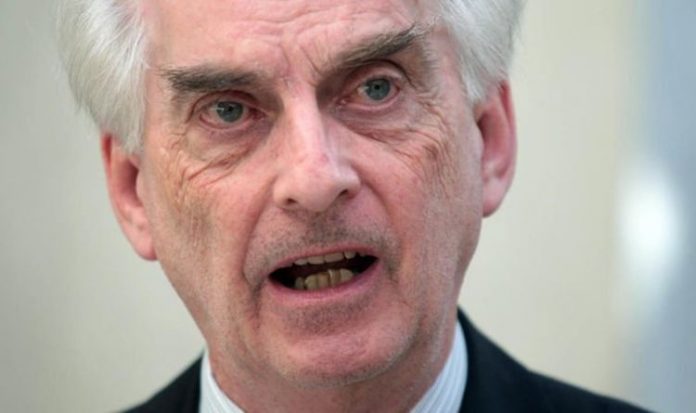England was placed into lockdown following advice from the Government’s scientific advisers, despite warnings that it would lead to mass unemployment and cause huge economic damage. Much of the data relied on by Sage, including the “4,000 a day” death figures, has been challenged, with experts saying too much weight was being given to the doomsday scenarios. One accused the group of using “eye-wateringly wrong modelling data to inform government policy” akin to “crystal ball gazing”.
Boris Johnson has not revealed the estimated cost of the current lockdown, prompting his predecessor Theresa May to say in Parliament: “The Government must’ve made this analysis, must’ve made this assessment. Let us see it and make our own judgements.”
Professor Hugh Pennington, a public health expert at the University of Aberdeen, said it was past time for a new team of advisers to look at the bigger picture.
He said: “The Treasury should now build a team closely linked but separate from Sage so they can see what Sage is proposing.
“This should include economists, sociologists, behavioural experts, police, people from the hospitality industry, patient and consumer groups and the food industry.
“It should also include people from cancer and heart research as well as other diseases whose treatment is affected by Covid. These could assess the behaviour of people and find out how people will benefit and measure this against the harms.
“This Treasury group could make its own judgment to make sure policies are being weighed up as cost-effective. It would be tasked with how to cope with the current harms of lockdown on mental health, job losses and other health problems as well as looking at least 12 months forward finding a way to manage the pandemic without needing to go into the cycle of lockdowns.
“Lockdown in itself is simply putting off the evil day because when you unlock again the virus takes off.
“We should have been doing this from the start and now is the time to do it.”
Richard Sullivan, professor of cancer and global health at Kings College London, said: “There is an urgent need to recalibrate the thresholds for going into national lockdowns”.
“This has to take into account the wider health and welfare impacts which continue to apparently play a minor role in the ‘Covid-19 only’ Sage approach to policy-making.
“We now have direct evidence that lockdowns have caused serious and significant increases in cancer deaths and suffering due to delays in diagnosis and treatment.
The welfare impacts will also have serious impacts on long-term cancer outcomes. There is a lack of perspective and balance.”
In September, chief scientific adviser Sir Patrick Vallance said that the country faced 50,000 infections a day by the middle of last month. Although he said it was not a “prediction”, the total was far lower.
He also foresaw “200-plus deaths per day” by November – and the deaths have been higher than his estimate.
But last weekend, the lockdown decision was announced after a public broadcast by Sir Patrick and chief medical officer Chris Whitty relying on charts with a worst-case scenario of 4,000 deaths a day.
It emerged shortly after that these figures were already outdated and had been revised down by the modelling team. The data presented was also dramatically more pessimistic than models drawn up by other expert teams.
Following the row over data, the official statistics watchdog, the Office for Statistics Regulation, issued a warning over the use of coronavirus data without transparency and in ways which can “confuse” the public.
Professor Sullivan said: “There has been a lot of blurring about what data is trustworthy and what are, frankly, total guesses. A lot of statements are coming across as though they are verified facts rather educated guesses.
“The public have also been witnessing a lot of independent commentary by Sage members creating even more confusion”.
“People stop believing what is being said and compliance goes down. The modelling community have always been clear that these projections are really only reliable for around a week to 10 days forward, any further and it becomes crystal ball gazing.”







